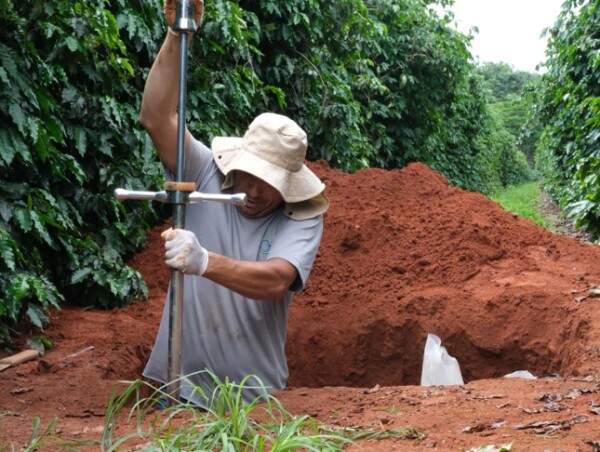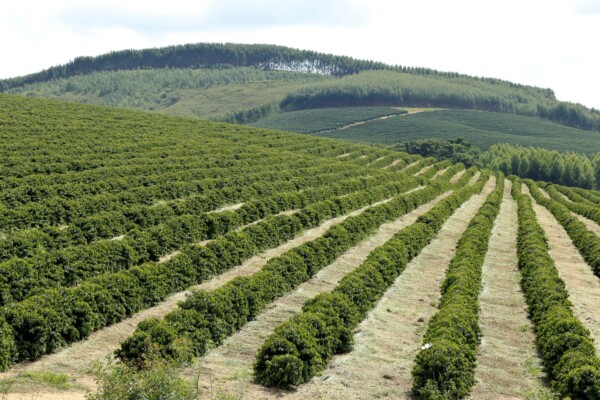
Cecafé’s study shows that there are opportunities for the Generation of carbon credits by the coffee industry, with the adoption of conservationist practices.
In May, Brazil took a step towards the development of a regulated national emissions market, an instrument present in 65 countries and which, according to Safra Asset, will trade 700 billion euros in carbon credits in 2021. Considering the high capacity of sustainable coffee farming to remove carbon from the atmosphere, the establishment of governance for this market in the country can generate economic benefits and create value for Brazilian coffee.
In consonance with the National Policy on Climate Change, which has as one of its objectives to foster the development of the Brazilian Market for Emission Reduction – MBRE, the decision of the Executive Branch of the Government, published via Decree, established the guidelines for the design of Sector Plans with decarbonization pathways and a Registration System to ensure transparency and credibility to future projects and carbon transactions.
The Sector Plans for Climate Change Mitigation are instruments for the fulfillment of Brazil’s climate target with the United Nations (UN), that is, to reduce 50% of the country’s greenhouse gas emissions (GHG) by 2030 and achieve carbono neutrality by 2050.
The Executive Branch will be responsible for approving the Sector Plans, which will be applied, in different approaches, to nine economic sectors, which may present their decarbonization pathways within a year: electricity, transportation, manufacturing and durable consumer goods industries, fine and base chemical industries, pulp and paper, mining, civil construction, health services, and agriculture.
The MBRE will be the instrument for the effective implementation of Sector Plans, enabling compliance with emission reduction commitments by economic sectors through the use and trading of carbon credits. The expected impact is to increase the demand for these assets.
To assure transparency and credibility to this process, the National System for Greenhouse Gas Emission Reduction (Sinare) will be established to work as a central registry of GHG emissions, removals, reductions, and compensations, as well as actions related to the trade and retirement of carbon credits.
The Ministry of the Environment will be responsible for managing Sinare, which will also allow the registration of relevant information for Brazilian agribusiness, such as the carbon of native vegetation in rural properties and carbono stored in the soil.
Given the heterogeneity and specificities of the sectors involved, the provision for differentiated treatment in the establishment of Sector Plans is important, especially when considering the agricultural sector, with many small growers and high potential for generating carbon credits.
In coffee farming, 72% of rural establishments have up to 20 ha and 78% are family-owned farms. A major step to work on the connection of these growers with the carbon market is to prove that the adoption of good agricultural practices in coffee farms generates additionality in the reduction of GHG emissions, in alignment with the Paris Agreement. This was accomplished in a recent study developed by Cecafé.

With the research “Estimated Greenhouse Gases Emissions and Removals from Brazilian Coffee”¹, conducted by Imaflora’s team of specialists in climate and emissions, under the leadership of Prof.Carlos Eduardo Cerri, from Esalq/USP, Cecafé demonstrates that the adoption of good practices in coffee farming makes the activity retain even more CO2eq in the soil and in the plant than it emits into the atmosphere, in relation to traditional management, which is already ‘carbon negative’ (-1.63 t CO2eq/ha/year).
In the transition from traditional to conservationist management, which includes the application of organic and mineral fertilizers, organic compost and maintenance of a more intense ground cover, a negative carbon balance of 10.5 tons of CO2eq per hectare per year was obtained. This is equivalent to a carbon additionality due to the adoption of good agricultural practices of -3.79 tons of CO2eq per ton of green coffee.
As extra information, not included in the carbon balance, the study also evaluated the impact of reserving native vegetation on farms to mitigate climate change. The results show that for each ectare of cultivated coffee there is, on average, 50 tons of carbon stored in the form of Legal Reserves (LR) and Permanent Preservation Areas (PPA). These figures reaffirm the importance of Sinare allowing registration of carbon from native vegetation present in rural properties.
The results of Cecafé’s study show that there is potential and that efforts are needed to develop robust and inclusive methodologies that facilitate the Monitoring, Reporting and Verification (MRV) processes, allowing the coffee sector to be connected in a comprehensive way to the demand for certified emission reductions from different sectors, whether via a regulated or voluntary market.

Regarding the implementation of the Brazilian carbon market, Cecafé will continue to participate in sectorial debates, including those related to the processing, improvement, and approval of the PL 528/2021, which is essential for the existence of legal security in the development of a regulated market. More mature discussions between the public and private sectors will allow Brazil to reach its climate goal and make possible awarding prizes to agribusiness sectors that are aligned with ESG criteria, such as the coffee chain.
1 https://www.cecafe.com.br/site/wp-content/uploads/2022/05/cecafe_relatorio_imaflora_vf.pdf
Marcos Matos
CECAFÉ CEO
Silvia Pizzol
CECAFÉ Sustainability Manager


Leave A Comment